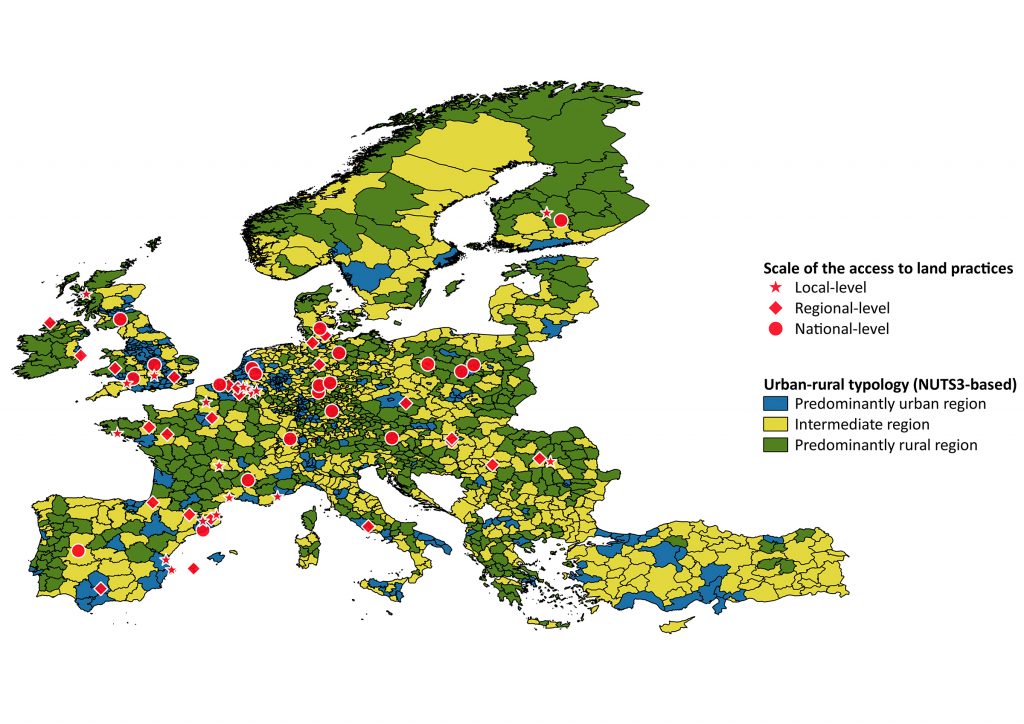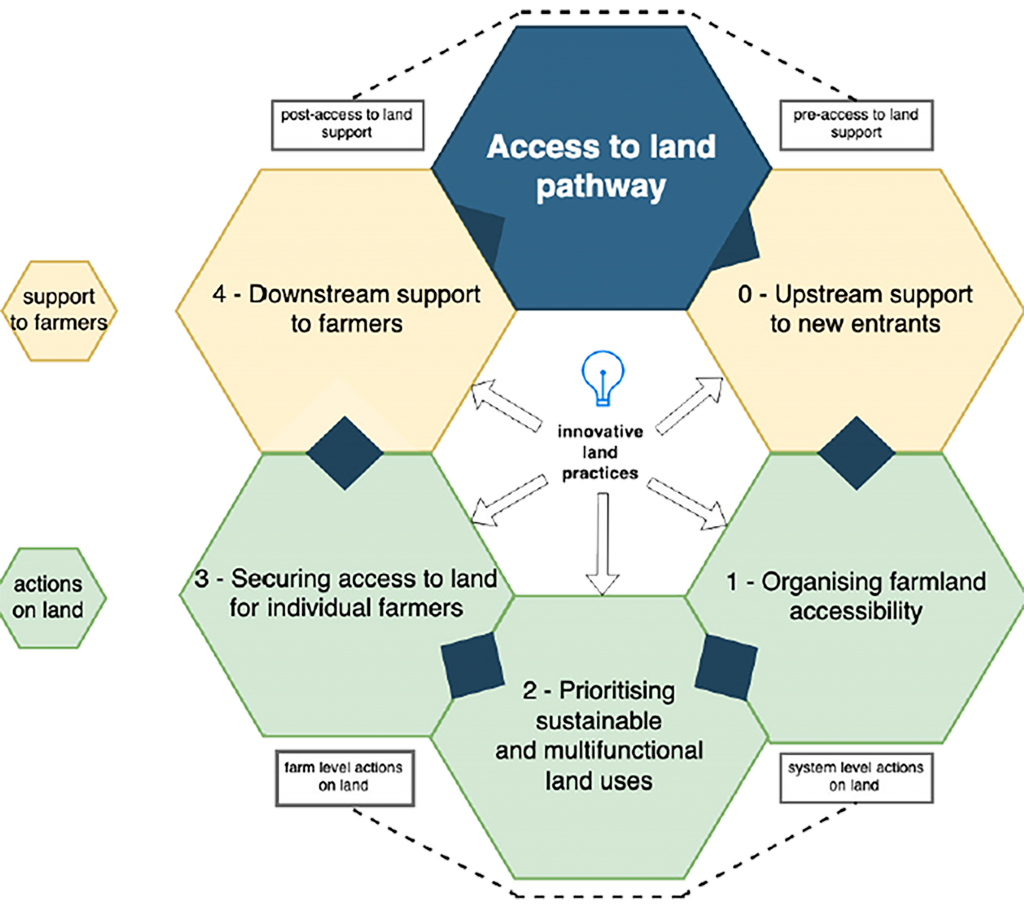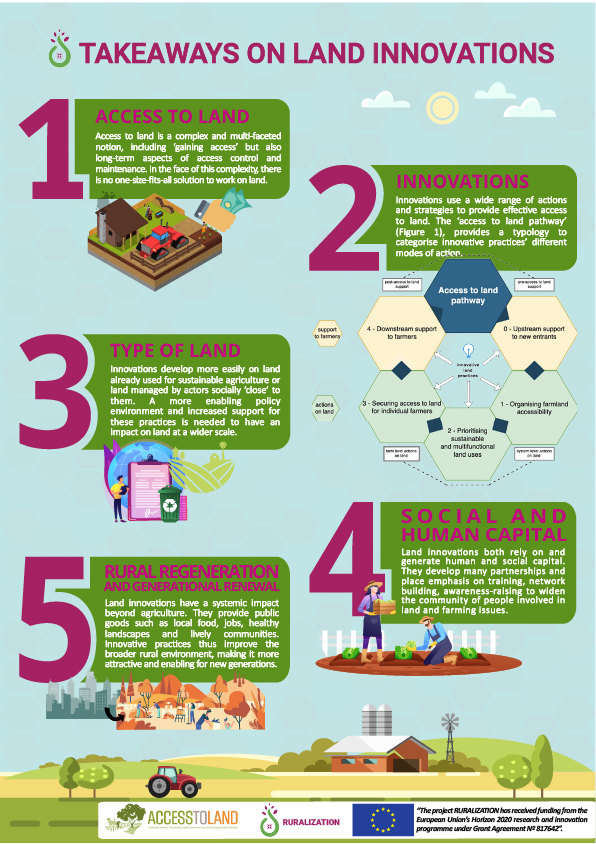KEY TAKEAWAYS FROM A EUROPEAN STUDY
Involving partners from research, civil society, public, and private sectors, the brings a multi-actor and multi-disciplinary perspective on innovationsand good practices to trigger rural regeneration and generational renewal in Europe.
Access to land is recognised as a major barrier to entering farming. The RURALIZATION project is investigating land policies and land innovations to help new generations overcome this challenge. In 2020, RURALIZATION documented 64 innovative land practices, looking at ways that a variety of actors—farmers themselves but also citizens, local authorities, rural development organisations, and others—work towards preserving farmland and increasing access, particularly for new entrants interested in agroecological farming.
The 64 land innovations documented in RURALIZATION

5 TAKEAWAYS ON LAND INNOVATIONS
1. Access to land is a multi-faceted and ongoing process. It includes ‘gaining access’—i.e. contracting of a lease or purchasing of a plot—but also long-term aspects of access control and access maintenance, which affect land structures and land security over time. In the face of this complexity, the study found that there is noone-size-fits-all solution to work on access to land. Rather, innovative land practices establish strategies and partnerships depending on their local context, objectives, and resources.
2. Innovations use a wide range of actions to provide effective access to land. This includesfor instanceproviding new entrants with skills and advice to access land, working on land accessibility and preservation, providing long-term security through acquiring and leasing land to farmers, or working to improve the viability of sustainable farms. The ‘access to land pathway’ (Figure 1), provides a typology to categorise innovative practices’ different modes of action.

Figure 1: Representation of the “Access to Land Pathway”
3. Land innovations develop more easily on land already used for sustainable agriculture or land managed by actors socially ‘close’ to them. This implies that the innovative practices studied currently relate to a rather marginal portion of European lands. In order to reach other types of land (e.g. abandoned land, land cultivated through intensive practices, or peri-urban land), they usually need to develop more complex and costly partnerships. A more enabling policy environment and increased support for these practices to emerge is needed to have an impact on land at a wider scale.
4. Land innovations both rely on and generate human and social capital. The practices documented by RURALIZATION each work on average with over 10 different types of partner. They also place emphasis on training, network building, and awareness-raising actions to develop more people’s skills and social connections related to land. As a result, innovative land practices widen the community of people involved in land and farming issues in Europe. Supporting more people to get involved in complex land systems is necessary to counteract the exclusive nature of land markets.
5. Innovative land practices are a lever for rural regeneration and generational renewal. These practices have a systemic impact, going beyond the agricultural sphere and encouraging local areas’ wider economic, social and environmental regeneration through providing local food, jobs, healthy landscapes and lively communities, among other public goods. Innovative practices thus improve the broader rural environment, making it more attractive and enabling for new generations of farmers and other newcomers, as well as existing rural communities.
5 EXAMPLES OF INNOVATIVE LAND PRACTICES
Check out the list of 64 WP6 innovation practices HERE
Alice Martin-Prével





